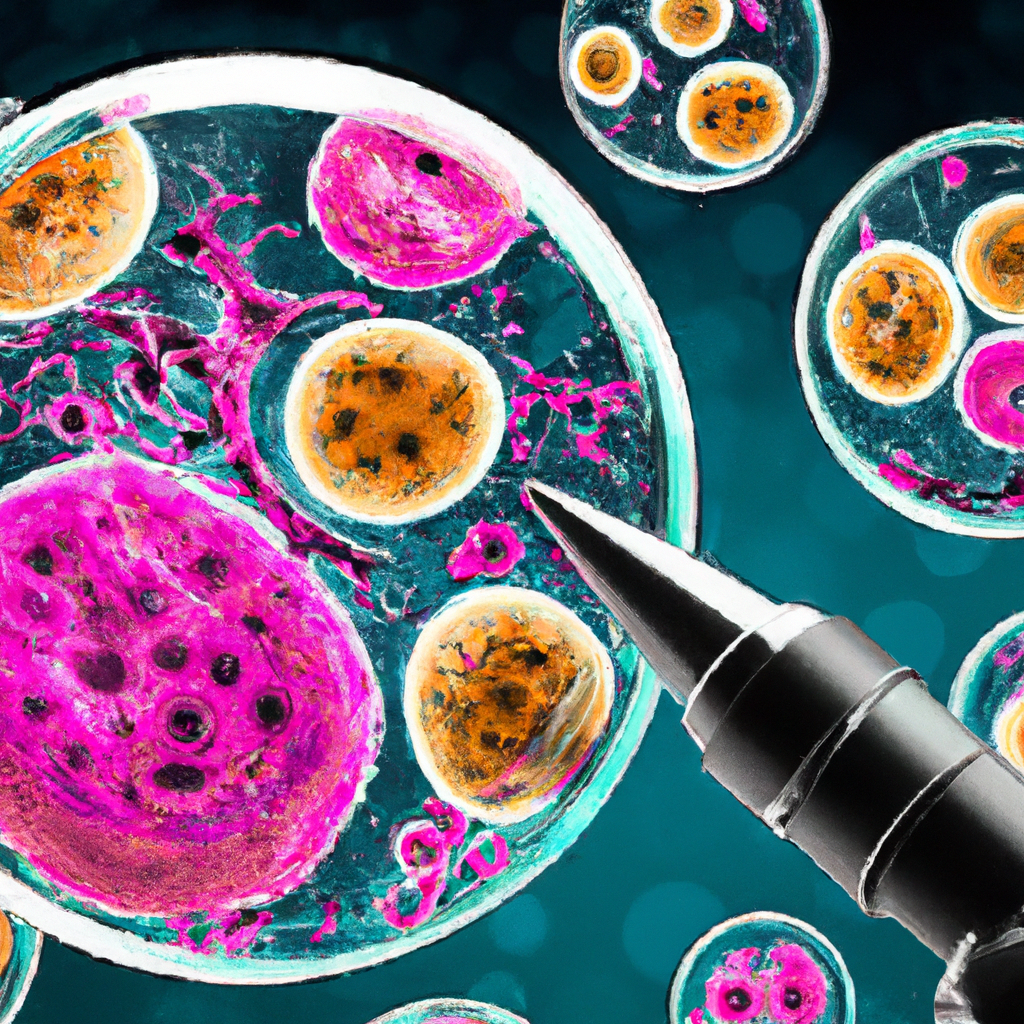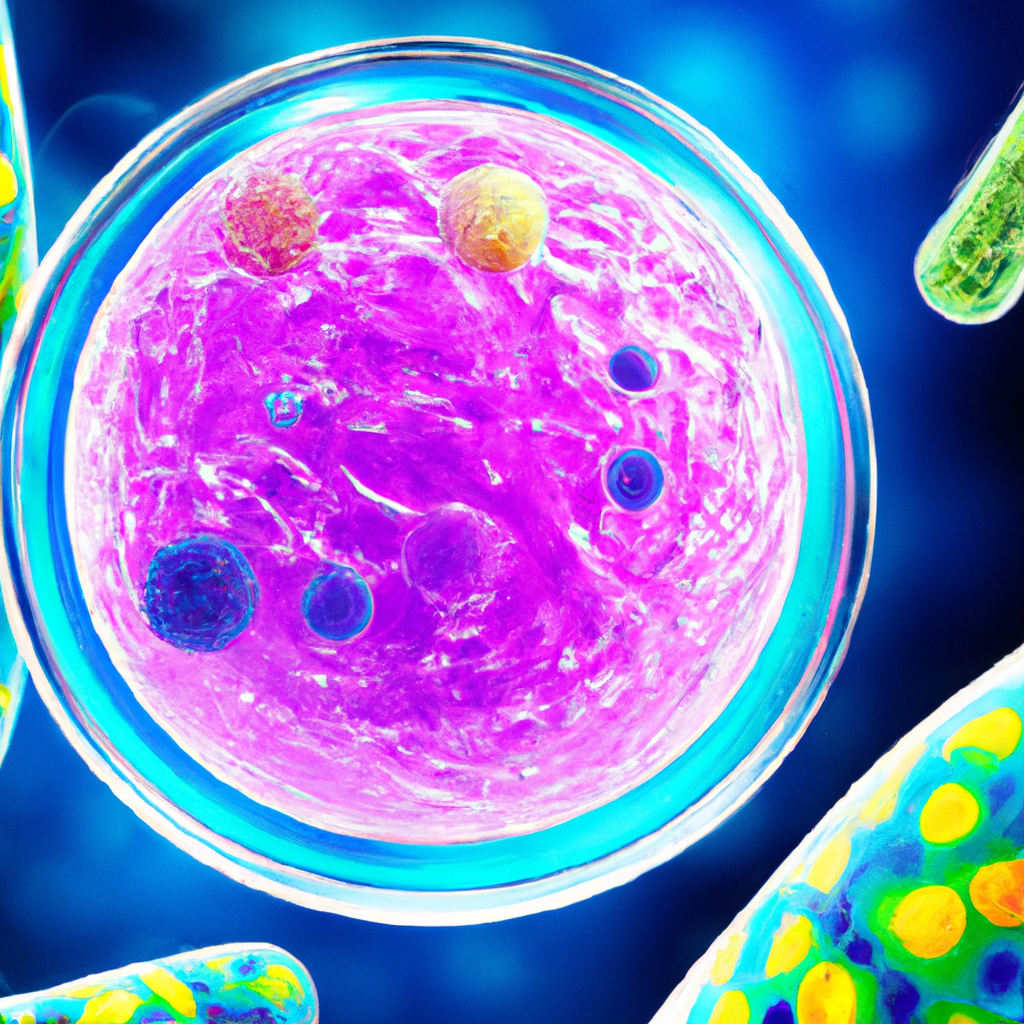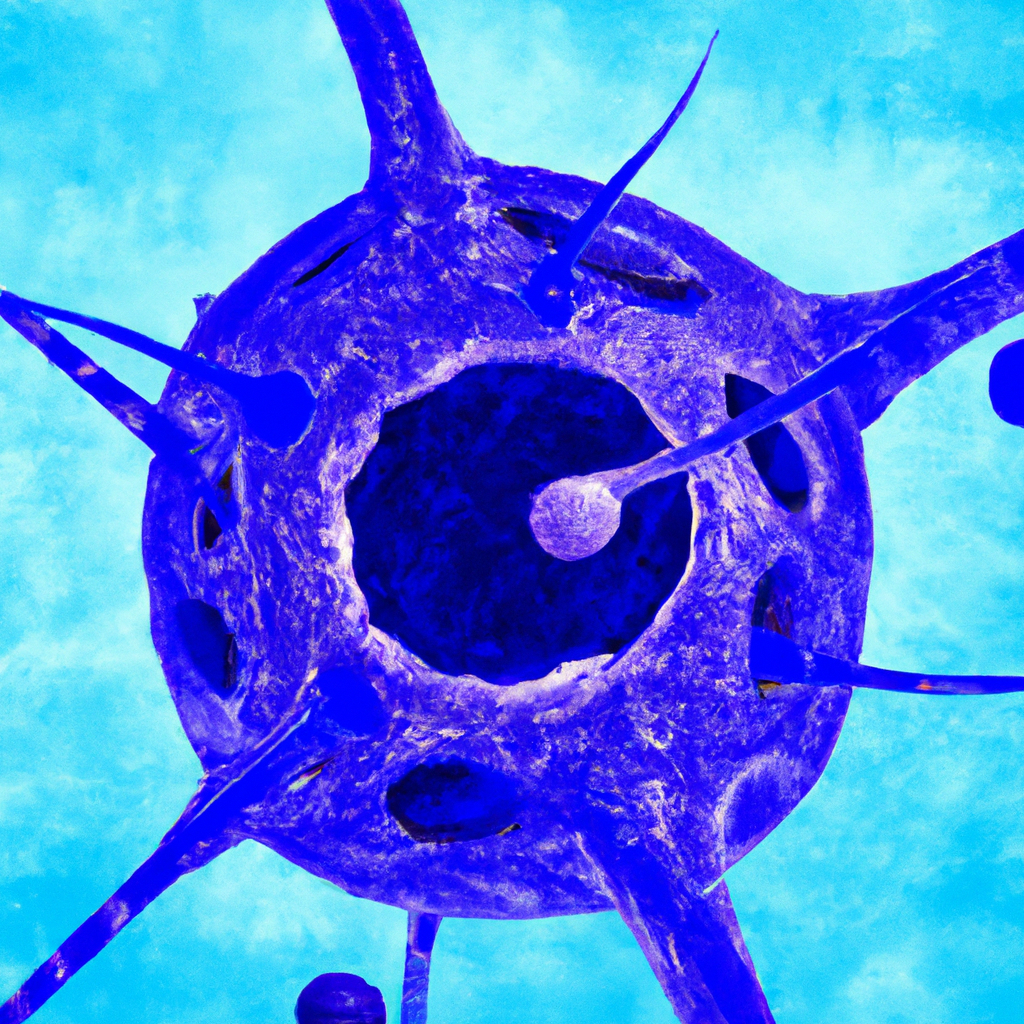Have you ever wondered how stem cells can play a crucial role in addressing metabolic disorders in Malaysia? In this article, we will explore the immense potential of stem cells and their impact on addressing these disorders. From understanding the basics of stem cell research to examining the current advancements in Malaysia, we will delve into the cutting-edge technology and innovative therapies that are revolutionizing the treatment of metabolic disorders. Join us as we dive into the fascinating world of stem cells and discover the potential they hold in transforming healthcare in Malaysia.
Stem Cells: An Introduction
Stem cells are a type of specialized cells found in the human body that have the remarkable ability to differentiate into various cell types and regenerate damaged tissues. These unique cells play a crucial role in the development, growth, and repair of the body. Stem cells possess two defining characteristics – self-renewal, which means they can multiply and create more stem cells, and pluripotency, which means they can differentiate into different cell types.
Definition and Characteristics of Stem Cells
Stem cells can be defined as undifferentiated cells that have the potential to develop into specialized cell types. They are characterized by their ability to self-renew and differentiate into different lineages of cells. Stem cells can be broadly categorized into two types – embryonic stem cells and adult stem cells. Embryonic stem cells are derived from embryos, particularly from the blastocyst stage, whereas adult stem cells are present in various tissues and organs of the body.
Types of Stem Cells
-
Embryonic Stem Cells: Embryonic stem cells are derived from embryos during the blastocyst stage, typically around five days after fertilization. These cells are pluripotent, meaning they have the potential to differentiate into any type of cell in the body.
-
Adult Stem Cells: Adult stem cells, also known as somatic stem cells, are found in various tissues and organs of the body. Unlike embryonic stem cells, adult stem cells are multipotent, which means they can differentiate into a limited range of cell types specific to the tissue or organ they reside in. Examples of adult stem cells include hematopoietic stem cells found in bone marrow, mesenchymal stem cells found in bone marrow and adipose tissue, and neural stem cells found in the brain.
-
Induced Pluripotent Stem Cells (iPSCs): Induced pluripotent stem cells are artificially reprogrammed cells that have been transformed to an embryonic-like state. iPSCs are created by introducing specific genes into adult cells, causing them to regain the ability to differentiate into multiple cell types.
Sources of Stem Cells
Stem cells can be obtained from various sources, each with its own advantages and limitations. The sources of stem cells include:
-
Embryonic Stem Cells: Embryonic stem cells are derived from surplus embryos donated by fertility clinics with informed consent from the donors. These embryos are typically leftovers from in vitro fertilization procedures and would otherwise be discarded.
-
Adult Stem Cells: Adult stem cells can be obtained from various tissues and organs, including bone marrow, adipose tissue, umbilical cord blood, and dental pulp. These sources are easily accessible and do not require the destruction of embryos.
-
Induced Pluripotent Stem Cells (iPSCs): iPSCs are created by reprogramming adult cells using genetic manipulation techniques. This method eliminates the need for embryonic stem cells and allows for personalized cell therapies.
Importance of Stem Cells in Medicine
Stem cells have revolutionized the field of medicine with their immense potential for regenerative therapies and disease treatment. The importance of stem cells in medicine can be attributed to the following factors:
-
Regenerative Medicine: Stem cells hold the key to regenerating damaged or diseased tissues and organs. By differentiating into specialized cell types, stem cells can repair and replace damaged cells, offering potential treatment options for a wide range of medical conditions, including metabolic disorders.
-
Disease Modeling: Stem cells can be used to create disease-specific cell lines, allowing researchers to study the mechanisms underlying various diseases and develop targeted therapies.
-
Drug Development: Stem cells offer an ethical and efficient alternative to animal testing in drug development. They can be used to screen and evaluate the efficacy and safety of new drugs before human trials, potentially reducing the time and cost involved in the drug discovery process.
Current Applications of Stem Cells in Malaysia
In Malaysia, significant progress has been made in the field of stem cell research and its applications in medical treatments. Some of the current applications of stem cells in Malaysia include:
-
Hematopoietic Stem Cell Transplantation: Hematopoietic stem cell transplantation, also known as bone marrow transplantation, is a well-established stem cell therapy used to treat patients with certain types of blood cancers, such as leukemia and lymphoma. In Malaysia, this procedure is performed in specialized centers and has shown promising results in improving patient outcomes.
-
Mesenchymal Stem Cell Therapy: Mesenchymal stem cells (MSCs) derived from sources such as bone marrow and adipose tissue have shown potential in treating various conditions, including orthopedic injuries, autoimmune diseases, and degenerative disorders. In Malaysia, MSC therapy is being explored for its efficacy in conditions such as osteoarthritis and diabetes-related complications.
-
Tissue Engineering: Stem cells, combined with biomaterial scaffolds and growth factors, are being used in tissue engineering approaches to regenerate damaged tissues and organs. In Malaysia, researchers are actively working on developing tissue-engineered constructs for applications in cardiac regeneration, nerve repair, and skin grafting.
Understanding Metabolic Disorders
Metabolic disorders are a group of medical conditions characterized by an impaired metabolic process, leading to abnormalities in the body’s ability to convert food into energy or eliminate waste products. These disorders can have severe consequences on various organs and systems of the body. It is crucial to understand the definition, types, prevalence, challenges, and existing treatment options for metabolic disorders in Malaysia.
Definition and Types of Metabolic Disorders
Metabolic disorders encompass a wide range of conditions that affect the body’s metabolic processes, including the breakdown and utilization of nutrients, the production and utilization of energy, and the elimination of waste products. These disorders can result from genetic abnormalities, enzyme deficiencies, hormonal imbalances, or lifestyle factors.
Common types of metabolic disorders include:
-
Diabetes Mellitus: Diabetes is a chronic metabolic disorder characterized by high blood sugar levels due to insulin resistance or insufficient insulin production by the pancreas. Type 1 diabetes is an autoimmune condition, while type 2 diabetes is usually associated with lifestyle factors such as obesity and sedentary behavior.
-
Inherited Metabolic Disorders: These disorders are caused by genetic abnormalities that affect specific enzymes or proteins involved in metabolic pathways. Examples include phenylketonuria (PKU), which affects the metabolism of the amino acid phenylalanine, and galactosemia, which impairs the metabolism of galactose.
-
Lipid Metabolism Disorders: Lipid metabolism disorders involve abnormalities in the processing and utilization of lipids (fats) in the body. Conditions such as hypercholesterolemia and hypertriglyceridemia can increase the risk of cardiovascular diseases.
Prevalence of Metabolic Disorders in Malaysia
Metabolic disorders pose a significant health burden in Malaysia, with an increasing prevalence in recent years. According to the National Health and Morbidity Survey conducted in 2019, the estimated prevalence of diabetes in Malaysia was 18.3%, affecting approximately 4.6 million adults. The prevalence of other metabolic disorders, such as dyslipidemia and obesity, is also alarmingly high.
The rising prevalence of metabolic disorders can be attributed to various factors, including sedentary lifestyles, unhealthy dietary habits, genetic predisposition, and an aging population. It is imperative to address these challenges and develop effective strategies for the prevention, early detection, and management of metabolic disorders in Malaysia.
Challenges in Treating Metabolic Disorders
The treatment of metabolic disorders poses several challenges due to the complexity of these conditions and the individual variability in patient responses. Some of the key challenges in treating metabolic disorders include:
-
Disease Heterogeneity: Metabolic disorders encompass a broad spectrum of conditions with varying underlying causes and manifestations. Treating these disorders requires a personalized approach that takes into account the specific genetic, physiological, and lifestyle factors contributing to the disease.
-
Compliance and Lifestyle Modifications: Managing metabolic disorders often involves lifestyle modifications, such as dietary changes, exercise, and medication adherence. Encouraging patients to adopt and maintain these modifications can be challenging, requiring ongoing education, support, and motivation.
-
Limited Treatment Options: Despite significant advancements in the understanding of metabolic disorders, there are still limited treatment options available for some conditions. This highlights the need for continued research and development of innovative therapies, including stem cell-based approaches.
Existing Treatment Options in Malaysia
In Malaysia, the management of metabolic disorders primarily focuses on lifestyle modifications, pharmacotherapy, and monitoring of disease progression. Some of the existing treatment options for metabolic disorders include:
-
Lifestyle Modifications: Dietary interventions, weight management programs, and regular physical activity are essential components of managing metabolic disorders. Malaysia has implemented various public health campaigns to promote healthy lifestyles and raise awareness about the importance of diet and exercise in preventing and managing metabolic disorders.
-
Pharmacotherapy: Medications, such as oral hypoglycemic agents, insulin, and lipid-lowering drugs, are commonly prescribed to control blood sugar levels, manage lipid abnormalities, and reduce the risk of cardiovascular complications associated with metabolic disorders.
-
Bariatric Surgery: Bariatric surgery, including procedures like gastric bypass and sleeve gastrectomy, may be recommended for individuals with severe obesity and associated metabolic disorders. These surgical interventions can lead to significant weight loss and improvement in metabolic parameters.
While these treatment options have shown effectiveness in managing metabolic disorders to some extent, there is a need for further advancements in the field to address the underlying causes and provide more targeted therapies.

Linking Stem Cells and Metabolic Disorders
Recent research has highlighted the potential of stem cells in the treatment of metabolic disorders. Stem cells offer a promising approach to address the underlying causes of these disorders and provide targeted therapies. Understanding the mechanisms of stem cells in addressing metabolic disorders, their potential in regulating metabolism, and specific stem cell therapies for metabolic disorders is crucial.
Mechanisms of Stem Cells in Addressing Metabolic Disorders
Stem cells have several mechanisms by which they can address metabolic disorders:
-
Differentiation into specific cell types: Stem cells, when appropriately directed, can differentiate into specific cell types affected by metabolic disorders. For example, pancreatic beta cells derived from stem cells can potentially replace the dysfunctional beta cells in individuals with diabetes.
-
Secretome and Paracrine Signaling: Stem cells secrete a variety of growth factors, cytokines, and extracellular vesicles that can modulate the cellular environment and promote tissue repair. These secreted factors can stimulate endogenous repair mechanisms, modulate inflammation, and improve metabolic function in affected tissues.
-
Immune Modulation: Stem cells possess immune-modulating properties that can help regulate the immune response and reduce inflammation. This immune modulation can be beneficial in metabolic disorders where chronic low-grade inflammation is present, such as in obesity and type 2 diabetes.
Potential of Stem Cells in Regulating Metabolism
The potential of stem cells in regulating metabolism lies in their ability to restore or improve the function of key metabolic organs and tissues. Some examples include:
-
Pancreatic Islet Regeneration: Stem cells can differentiate into pancreatic beta cells, which produce insulin and regulate blood sugar levels. By replacing the damaged or dysfunctional beta cells in individuals with diabetes, stem cell therapies hold the potential to restore normal glucose metabolism.
-
Adipose Tissue Engineering: Adipose-derived stem cells (ADSCs) can be used in tissue engineering approaches to generate functional adipose tissue. This could potentially help in the management of obesity and metabolic syndrome by improving adipose tissue function and metabolic regulation.
-
Liver Regeneration: The liver plays a crucial role in metabolism, including the processing and storage of nutrients. Stem cells, such as hepatic progenitor cells, hold the potential to regenerate damaged liver tissue and improve liver function in metabolic disorders like non-alcoholic fatty liver disease (NAFLD) and cirrhosis.
Stem Cell Therapies for Specific Metabolic Disorders
Research on stem cell therapies for specific metabolic disorders is ongoing, and several promising approaches have been explored. Some examples include:
-
Diabetes Mellitus: Stem cell-based therapies, including the transplantation of pancreatic islets derived from stem cells or the regeneration of pancreatic beta cells, hold great promise for the treatment of diabetes. These approaches aim to restore or enhance the body’s ability to produce insulin, thereby achieving better glucose control.
-
Obesity and Metabolic Syndrome: Adipose-derived stem cells (ADSCs) are being studied for their potential in addressing obesity and metabolic syndrome. These cells can be used to regenerate adipose tissue and improve adipose function, leading to better metabolic regulation.
-
Inherited Metabolic Disorders: Stem cell therapies hold the potential to address the underlying genetic defects in inherited metabolic disorders. For example, in conditions like phenylketonuria (PKU) or galactosemia, stem cells could be used to generate functional cells that can metabolize the specific substrates involved.
Effectiveness and Safety of Stem Cell Treatments
The effectiveness and safety of stem cell treatments for metabolic disorders are still being extensively researched. While preclinical and early clinical studies have shown promising results, further research is needed to establish the long-term safety and efficacy of these therapies.
It is important to ensure that stem cell therapies undergo rigorous testing, adhere to ethical standards, and are regulated by appropriate authorities. This will help maintain patient safety, optimize treatment outcomes, and build trust among healthcare professionals and the public.
Case Studies on Stem Cell Treatment for Metabolic Disorders in Malaysia
In Malaysia, several research studies and clinical trials have been conducted to explore the potential of stem cell therapies in addressing metabolic disorders. These studies have utilized various types of stem cells, including mesenchymal stem cells derived from bone marrow and adipose tissue.
Some notable case studies include:
-
Islet Cell Transplantation for Type 1 Diabetes: In a study conducted at a Malaysian hospital, islet cell transplantation was performed on selected patients with type 1 diabetes. The study reported a significant improvement in blood sugar control and a reduction in the requirement for exogenous insulin.
-
Adipose-derived Stem Cells for Obesity-related Complications: Researchers in Malaysia conducted a clinical trial to evaluate the safety and efficacy of adipose-derived stem cells in individuals with obesity-related metabolic complications. The study reported improvements in metabolic parameters, including insulin sensitivity and lipid profiles.
These case studies highlight the potential of stem cell therapies in addressing metabolic disorders in the Malaysian population. However, more extensive research and clinical trials are needed to establish the long-term benefits and safety of these therapies.
Current State of Stem Cell Research in Malaysia
Malaysia has made significant progress in the field of stem cell research, with ongoing efforts to explore the potential of stem cells in various applications, including the treatment of metabolic disorders. The current state of stem cell research in Malaysia includes an overview of research activities, funding and support, collaborations and partnerships, and advancements and breakthroughs.
Overview of Stem Cell Research in Malaysia
Stem cell research in Malaysia has gained momentum over the years, driven by advancements in biomedical sciences and a growing interest in regenerative medicine. Several research institutions, universities, and hospitals in Malaysia have dedicated stem cell research departments and laboratories.
The research focus in Malaysia includes stem cell transplantation, tissue engineering, disease modeling, and optimization of stem cell therapies for various medical conditions, including metabolic disorders. Researchers are studying different types of stem cells, including embryonic stem cells, adult stem cells, and induced pluripotent stem cells.
Funding and Support for Stem Cell Research
The Malaysian government has recognized the potential of stem cell research in advancing healthcare and has provided funding and support for research in this field. Funding opportunities are available through various government agencies, such as the Ministry of Health, Ministry of Science, Technology, and Innovation, and the Ministry of Higher Education.
In addition to government funding, research grants and scholarships from private foundations and industry collaborations further support stem cell research in Malaysia. These funding sources contribute to research infrastructure, equipment, training, and capacity building in stem cell research and therapy.
Collaborations and Partnerships in Stem Cell Research
Collaborations and partnerships among research institutions, universities, and industry stakeholders have played a vital role in advancing stem cell research in Malaysia. These collaborations facilitate knowledge sharing, access to resources, and interdisciplinary research approaches.
In Malaysia, research institutions have collaborated with international institutions and organizations, including stem cell centers of excellence and renowned universities. This ensures the exchange of expertise, research findings, and access to cutting-edge technologies, ultimately contributing to the growth and advancement of stem cell research in Malaysia.
Advancements and Breakthroughs in Stem Cell Research in Malaysia
Malaysia has achieved significant advancements and breakthroughs in stem cell research, contributing to the global body of knowledge in this field. Some notable advancements in stem cell research in Malaysia include:
-
Development of Novel Stem Cell-Based Therapies: Malaysian researchers have made progress in the development of novel stem cell-based therapies for conditions such as spinal cord injury, cardiovascular diseases, and metabolic disorders. These advancements pave the way for potential clinical applications in regenerative medicine.
-
Tissue Engineering Approaches: Malaysian researchers have successfully applied tissue engineering approaches using stem cells for the regeneration of various tissues, including bone, cartilage, and skin. These advancements have the potential to revolutionize the treatment of tissue damage and degenerative conditions.
-
Disease Modeling and Drug Discovery: Malaysian researchers have used stem cells to create disease-specific cell lines, enabling the study of disease mechanisms and the development of targeted therapies. Stem cell-based disease models have contributed to a better understanding of metabolic disorders and the identification of potential therapeutic targets.
These advancements and breakthroughs demonstrate Malaysia’s commitment to advancing stem cell research and its potential for addressing complex medical conditions, including metabolic disorders.

Regulatory and Ethical Considerations
The use of stem cells for research and therapy raises important regulatory and ethical considerations. In Malaysia, regulatory frameworks are in place to ensure the safe and ethical use of stem cells. It is essential to understand the regulatory framework, ethical issues and concerns, public perception and acceptance, and patient rights and informed consent in the context of stem cell therapies.
Regulatory Framework for Stem Cell Research and Therapy in Malaysia
The regulatory framework for stem cell research and therapy in Malaysia is overseen by the Ministry of Health, the National Pharmaceutical Regulatory Agency, and the National Stem Cell Committee. These bodies ensure that stem cell research and therapies adhere to established guidelines and regulations to protect patient safety and promote ethical practices.
In Malaysia, stem cell research and therapy involving human participants are regulated under the National Guidelines for Stem Cell Research and Therapy and the Human Research Act. These guidelines cover aspects related to ethics, informed consent, patient safety, and oversight of research and therapeutic activities.
Ethical Issues and Concerns in Stem Cell Usage
The use of stem cells raises ethical issues and concerns that need to be addressed. Some key ethical considerations in stem cell usage include:
-
Source of Stem Cells: The use of embryonic stem cells raises ethical debates due to the destruction of embryos. Malaysia, in line with international guidelines, allows the use of surplus embryos from fertility treatments with proper informed consent. However, strict regulations and ethical oversight are in place to ensure responsible and ethical use of embryonic stem cells.
-
Informed Consent: Informed consent is a critical ethical consideration in stem cell research and therapy. Patients must be fully informed about the risks, benefits, and uncertainties associated with stem cell treatments. Proper informed consent processes should be followed to ensure patient autonomy and protection.
-
Patient Safety and Efficacy: Stem cell-based therapies should undergo rigorous testing and demonstrate safety and efficacy in preclinical and clinical studies. It is essential to follow established guidelines and regulations to ensure patient safety and prevent the exploitation of vulnerable individuals seeking treatment.
Public Perception and Acceptance of Stem Cell Treatments
Public perception and acceptance of stem cell treatments play a crucial role in the successful implementation of these therapies. Malaysia has seen a gradual increase in public awareness and acceptance of stem cell therapies, particularly in the context of regenerative medicine.
Efforts to educate the public about stem cell research and therapy, their potential benefits, and the regulatory framework have contributed to improved understanding and acceptance. Public engagement programs, awareness campaigns, and collaborations between researchers and healthcare professionals have played a key role in fostering public trust and confidence in stem cell treatments.
Patient Rights and Informed Consent in Stem Cell Therapies
Patient rights and informed consent are fundamental aspects of stem cell therapies. Patients have the right to be fully informed about the nature of the therapy, its potential risks and benefits, and alternative treatment options. Informed consent processes should comply with ethical standards, such as ensuring voluntariness, understanding, and non-coercion.
Healthcare professionals involved in stem cell therapies have a responsibility to uphold patient rights and provide accurate information to enable patients to make informed decisions. Patient advocacy groups and regulatory bodies play a role in ensuring patient rights and promoting ethical practices in stem cell therapies.
Future Potential and Challenges
While stem cells hold great promise for addressing metabolic disorders, there are certain challenges and limitations that need to be considered. Exploring emerging trends, identifying opportunities for research and development, and fostering collaborative efforts are crucial for advancing stem cell therapies in Malaysia.
Emerging Trends and Potential of Stem Cells in Treating Metabolic Disorders
Emerging trends suggest that stem cell therapies hold enormous potential in treating metabolic disorders. Some emerging trends in stem cell research for metabolic disorders include:
-
Genetic Editing: Advances in genetic editing technologies, such as CRISPR-Cas9, have the potential to correct genetic defects in stem cells and improve their therapeutic potential for inherited metabolic disorders.
-
Precision Medicine: The field of precision medicine aims to tailor treatment approaches based on an individual’s unique genetic and physiological characteristics. Stem cell-based therapies, in combination with personalized medicine approaches, can optimize treatment outcomes for metabolic disorders.
-
Combination Therapies: Combining stem cell therapies with other treatment modalities, such as pharmacotherapy or gene therapy, may enhance treatment efficacy and address the multi-faceted nature of metabolic disorders.
Challenges and Limitations in Stem Cell Therapy for Metabolic Disorders
There are several challenges and limitations to consider in the development and application of stem cell therapies for metabolic disorders:
-
Safety and Efficacy: Ensuring the long-term safety and efficacy of stem cell therapies is a crucial challenge. Comprehensive preclinical and clinical studies are required to establish the safety and effectiveness of these therapies, particularly in the context of metabolic disorders.
-
Standardization and Scalability: The standardization and scalability of stem cell therapies present challenges due to the complex nature of stem cell biology and the need for consistent quality control measures. Efforts are underway to develop standardized protocols and manufacturing processes for clinical-grade stem cells.
-
Cost and Accessibility: Stem cell therapies can be costly and may not be affordable or accessible to all individuals with metabolic disorders. Addressing issues of cost, reimbursement, and equitable access is essential for widespread adoption of these therapies.
Opportunities for Research and Development
Despite the challenges, there are numerous opportunities for research and development in stem cell therapies for metabolic disorders:
-
Molecular and Cellular Biology: Furthering our understanding of the molecular and cellular mechanisms involved in metabolic disorders can help identify novel therapeutic targets and optimize stem cell-based approaches.
-
Tissue Engineering and Biomaterials: Combining stem cell therapies with tissue engineering approaches and biomaterial scaffolds holds potential for regenerating damaged metabolic organs, such as the pancreas and liver.
-
Drug Discovery and Screening: Stem cell-based disease models provide a platform for drug discovery and screening. Malaysia can contribute to the development of novel therapies for metabolic disorders by utilizing state-of-the-art screening technologies and expertise in stem cell biology.
Collaborative Efforts for Advancing Stem Cell Therapies
Collaborative efforts among researchers, clinicians, policymakers, and industry stakeholders are crucial for advancing stem cell therapies for metabolic disorders. Collaborations can facilitate knowledge exchange, pooling of resources, and the establishment of multi-center clinical trials.
In Malaysia, collaborations between research institutions, universities, and industry partners can help accelerate the translation of stem cell research into clinical applications. Additionally, international collaborations and partnerships provide opportunities for Malaysia to contribute to and benefit from the global advancements in stem cell therapies.

Government Initiatives and Support
The Malaysian government has recognized the potential of stem cell research and therapy in advancing healthcare and has implemented initiatives and programs to support and regulate these activities. Government policies and programs, regulation and oversight, public-private partnerships, and incentives for stem cell research contribute to the growth and advancement of stem cell therapies in Malaysia.
Government Policies and Programs for Stem Cell Research
The Malaysian government has formulated policies and programs to support stem cell research and therapy. The National Stem Cell Policy, developed by the Ministry of Science, Technology, and Innovation, provides guidelines and support for stem cell research and its translation into clinical applications.
Various government agencies, such as the Ministry of Health and the Ministry of Higher Education, have implemented programs to promote stem cell research and collaboration between researchers, clinicians, and industry stakeholders. These programs provide funding, infrastructure support, and capacity building opportunities for stem cell research in Malaysia.
Regulation and Oversight of Stem Cell Therapies
The Malaysian government ensures the regulation and oversight of stem cell therapies through various bodies and guidelines. The Ministry of Health, in collaboration with the National Pharmaceutical Regulatory Agency and the National Stem Cell Committee, oversees the safety and ethical considerations associated with stem cell therapies.
The National Guidelines for Stem Cell Research and Therapy provide a comprehensive framework for conducting stem cell research and therapy in Malaysia. The guidelines outline the ethical, safety, and regulatory considerations, including requirements for informed consent, laboratory practices, and clinical approval processes.
Public-Private Partnerships in Stem Cell Research and Treatment
Public-private partnerships play a crucial role in advancing stem cell research and treatment in Malaysia. Collaborations between academic institutions, research centers, and industry stakeholders enable the translation of research findings into clinical applications.
These partnerships foster collaborative research projects, facilitate knowledge exchange, and provide access to resources and expertise. By leveraging the strengths and resources of both sectors, public-private partnerships can accelerate the development and commercialization of stem cell-based therapies.
Incentives and Grants for Stem Cell Research
The Malaysian government provides incentives and grants to support stem cell research and development. Research grants and funding opportunities are available through government agencies, such as the Ministry of Science, Technology, and Innovation, and the Ministry of Higher Education.
In addition to financial incentives, the government offers tax incentives and intellectual property protection to encourage investment in stem cell research and related industries. These incentives aim to stimulate innovation, attract industry partners, and promote the commercialization of stem cell-based therapies.
Educational and Awareness Campaigns
Education and awareness about stem cells are crucial for fostering public understanding, dispelling misconceptions, and promoting ethical practices in stem cell research and therapy. Malaysia has initiated various educational and awareness campaigns to engage the public, raise awareness about stem cell research, and promote ethical practices.
Importance of Education and Awareness about Stem Cells
Education and awareness about stem cells are important for several reasons:
-
Ethical Considerations: Educating the public about stem cells and their applications helps foster understanding of the ethical considerations surrounding their use. This includes discussions on the source of stem cells, informed consent, and patient rights.
-
Public Perception: Enhancing public knowledge about stem cells can help dispel myths and misconceptions. This, in turn, can improve public perception and acceptance of stem cell research and therapy.
-
Patient Empowerment: Educating patients about stem cell therapies enables them to make informed decisions and actively participate in their healthcare. It empowers patients to ask relevant questions, understand potential risks and benefits, and contribute to shared decision-making processes.
Stem Cell Science Curriculum in Malaysian Universities
Malaysian universities offer stem cell science curricula at the undergraduate and postgraduate levels. These curricula provide students with a comprehensive understanding of stem cell biology, research methodologies, ethical considerations, and the potential applications of stem cells in various fields, including regenerative medicine and metabolic disorders.
Universities collaborate with research institutions and industry partners to offer practical training and research opportunities in stem cell laboratories. This exposure equips students with the necessary skills and knowledge to contribute to stem cell research and therapy in Malaysia.
Public Engagement Programs on Stem Cell Research
Public engagement programs play a crucial role in raising awareness and fostering public understanding of stem cell research and therapy. In Malaysia, various organizations and research institutions organize public lectures, seminars, and workshops to disseminate information about stem cells, ongoing research, and clinical applications.
These programs aim to engage the public, answer queries, and provide opportunities for dialogue between researchers and the community. They contribute to building public trust, facilitating knowledge exchange, and encouraging informed decision-making regarding stem cell therapies.
Promoting Ethical Practices and Consumer Awareness
Promoting ethical practices and consumer awareness is integral to ensuring the safe and responsible use of stem cell therapies. In Malaysia, regulatory bodies, research institutions, and professional organizations work together to establish guidelines, promote good clinical practices, and disseminate information about the regulation and oversight of stem cell therapies.
Consumer education programs and resources are available to empower individuals seeking stem cell therapies. These resources provide information on the risks and benefits of stem cell treatments, ethical considerations, and how to evaluate the legitimacy and credibility of stem cell clinics.

International Collaborations and Knowledge Sharing
International collaborations and knowledge sharing play a vital role in advancing stem cell research and therapy. Malaysia actively participates in bilateral and multilateral collaborations, engages in international conferences and symposiums, and shares best practices and research findings globally.
Bilateral and Multilateral Collaborations in Stem Cell Research
Malaysia collaborates with international research institutions, universities, and organizations in stem cell research. Bilateral and multilateral collaborations enable the exchange of expertise, resources, and research findings.
These collaborations include joint research projects, student exchange programs, and capacity-building initiatives. Through these partnerships, Malaysia can leverage global knowledge and best practices to advance stem cell research and contribute to scientific advancements in the field.
Participation in International Stem Cell Conferences and Symposiums
Malaysian researchers and clinicians actively participate in international stem cell conferences and symposiums. These global platforms provide opportunities for knowledge sharing, networking, and staying updated with the latest advancements in stem cell research.
By attending and presenting research findings at international conferences, Malaysian scientists contribute to the global body of knowledge, establish collaborations, and gain insights into innovative approaches in stem cell therapies.
Sharing of Best Practices and Research Findings
Malaysia shares its best practices and research findings in stem cell research and therapy globally. Through publications in scientific journals, presentations at conferences, and collaborations with international partners, Malaysian researchers contribute their expertise and advancements to the global stem cell community.
Sharing best practices and research findings facilitates the exchange of knowledge, promotes collaboration, and accelerates the progress of stem cell research and therapy worldwide.
Conclusion
The potential of stem cells in addressing metabolic disorders in Malaysia is significant. Stem cell therapies offer personalized, targeted approaches for the treatment of metabolic disorders, addressing the underlying causes and providing regenerative solutions. However, numerous challenges and ethical considerations must be overcome to ensure the safe and effective implementation of these therapies.
Through extensive research, collaborations, and governmental support, Malaysia has made significant strides in stem cell research and therapy. Ongoing research endeavors and the establishment of regulatory frameworks contribute to advancing stem cell therapies, providing hope for individuals with metabolic disorders.
Moving forward, continued research, multidisciplinary collaborations, and education and awareness campaigns are essential for driving the potential of stem cells in addressing metabolic disorders. By embracing these opportunities, Malaysia can position itself as a leader in stem cell research and contribute to global advancements in regenerative medicine.





